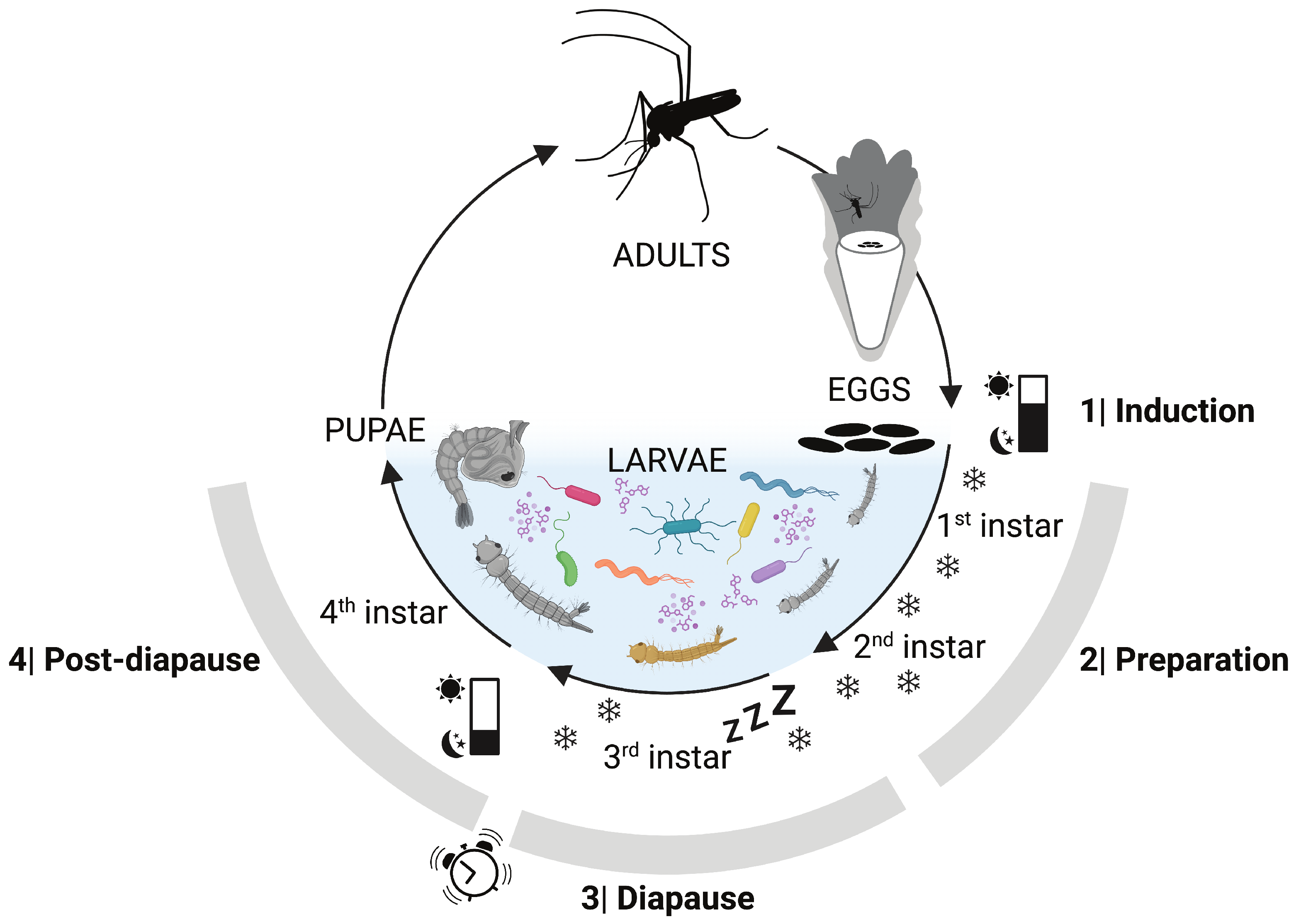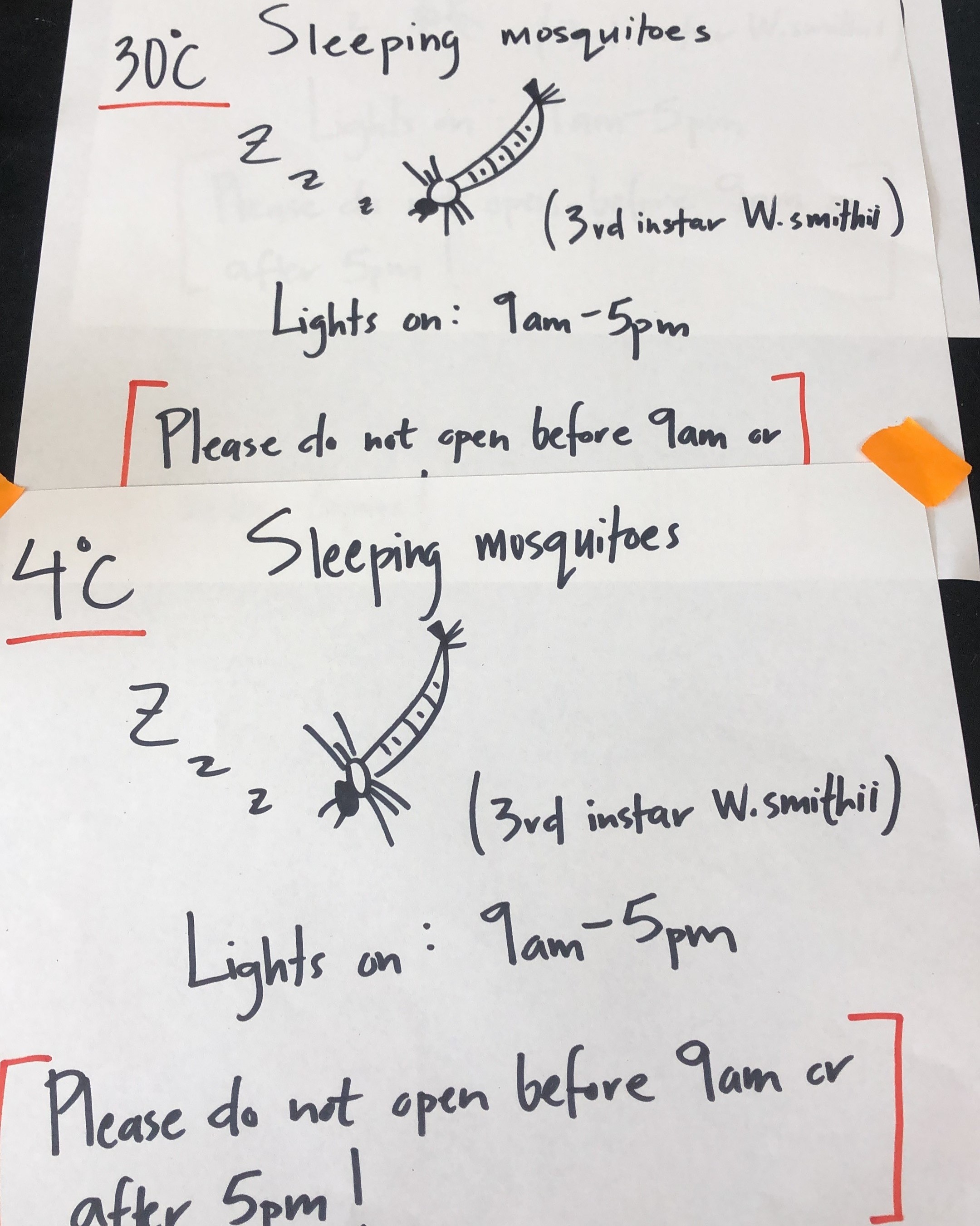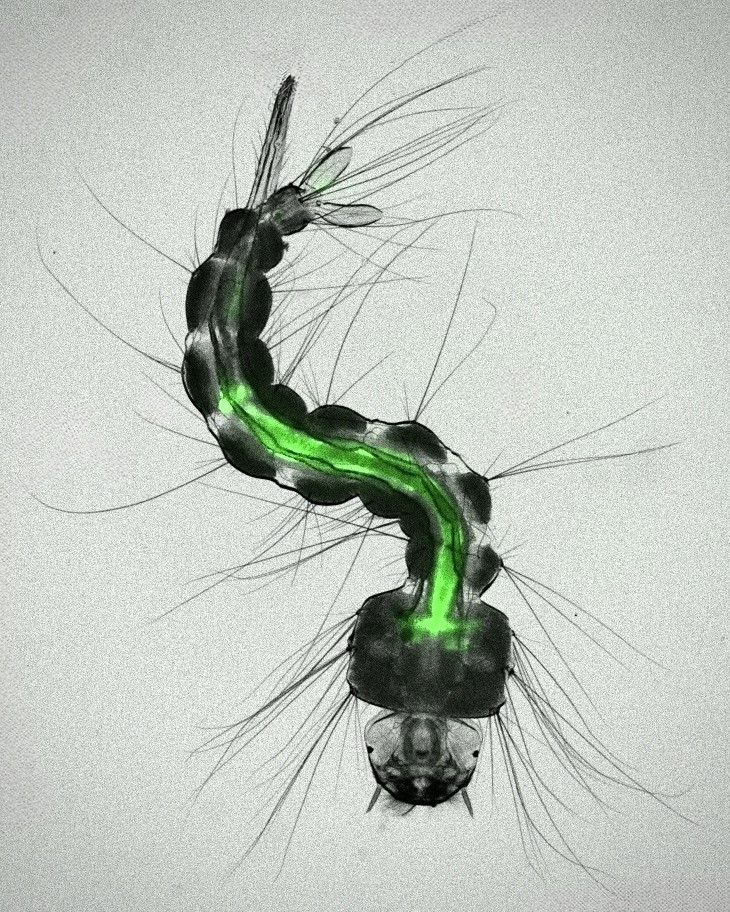Implicating microbes in regulation of host phenology
Exploring the division of metabolic labor between hosts and microbes during hibernal diapause in the pitcher plant mosquito (Wyeomyia smithii)
It is fundamentally important for organisms to coordinate developmental and behavioral milestones throughout their lifetimes in accordance with the abiotic and biological conditions of their environment. This may take the form of seasonality of reproduction (e.g., reproduce in the spring) or periods of reduced metabolic activity (e.g., hibernate in the winter). However, it is no small task to accurately anticipate the onset of environmental conditions, requiring integration of complex cues like temperature and day length (i.e., photoperiod). The cost of incorrectly anticipating the changing of the seasons is steep, not only in terms of having organismal physiology appropriate for local conditions, but also for matching the seasonal dynamics of other organisms with which an organism may interact. For example, it would be disadvantageous for a plant to flower in the absence of its insect pollinators. The seasonal timing of life history events is known as phenology, and cases where interacting organisms are misaligned in their timing are known as phenological mismatch.
Global change can drive phenological mismatch, with errant temperature events eliciting an inappropriate change in organismal biology or the early onset of warm temperatures contradicting the locally-adapted response to day length. What is unknown is to what extent microbes might play a role in buffering organismal response to global change (e.g., offering an extended phenotype which may confer more adaptive plasticity) or the role host-associated microbes play in coordinating seasonal phenology in the first place. In my PhD I began work in the pitcher plant mosquito to explore the essentiality of microbes to coordinate host hibernal diapause (some mosquito larvae go to sleep for the winter!) and on-going work is exploring the division of metabolic labor in the overwintering mosquito host.

Work in the diapausing mosquito system will also be conducted across temperatures, to more accurately explore the effects of mismatched seasonal cues on diapause survival and host-associated microbiota (e.g., warm temperatures during diapause). This work is only possible through on-going collaboration with PhD student Heidi McKee in Dr. Kerri Coon’s Lab of Vector Biology and Microbiology.


Associated references:
Arellano, A.A.*, McKee, H.*, Lee, J. †, Prack, J.P.†, Young, E.B., Coon, K.L. Bacterial community composition and function associated with population bottlenecks and temperature during pitcher plant mosquito seasonal metabolism. (In prep)
McKee, H.*, Arellano, A.A.*, Lee, J. †, Young, E.B., Coon, K.L. Host-microbe divisions of labor during seasonal metabolism revealed by global metabolomics and microbiota swaps. (In prep)
* authors contributed equally
† undergraduate mentee